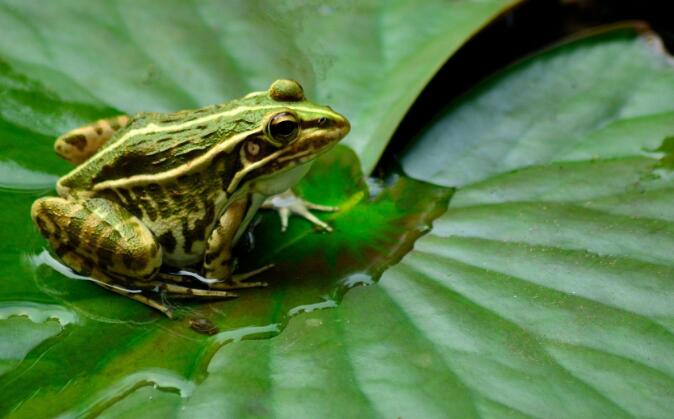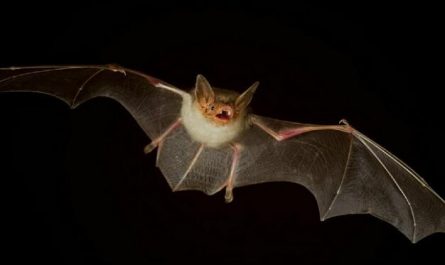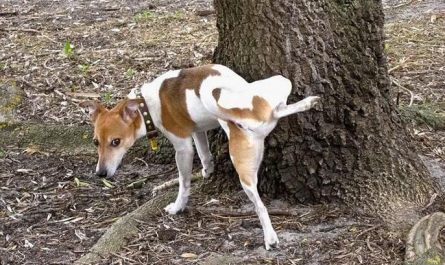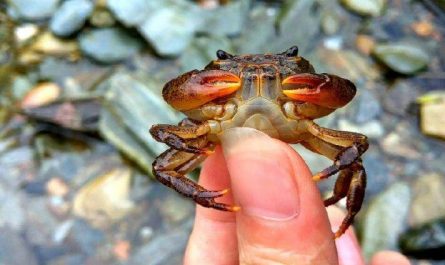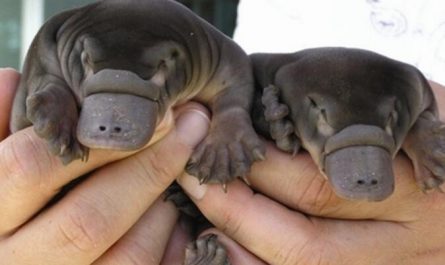The reason for the strong jumping ability of frogs
There are many jumping athletes among the frogs in the world. The results they create far exceed those of athletes trained in humans. The long jump record for human men is about twice the average height; however, an ordinary bullfrog can jump 9 times its length. The extraordinary jumping ability of frogs can play a huge role in hunting food and evading foreign invasion. The speed of jumping and the accuracy of target are amazing.
A small tree frog can catch flying insects in mid-air and return to the original place safely in about a tenth of a second from straightening its hind legs to taking off to prey. Why do frogs become jumping masters? The answer can be found from their growth process, body structure and jumping posture.
Usually, when a tadpole becomes a frog, its limbs appear and its tail begins to disappear. The tibia and ribs of the hind limbs of the frog are healed, and the adjacent bones are extended. Some frogs have their bones connected to a rod-shaped bone. The powerful femur is flexible like a spring, and the long feet act as a lever to provide lift when jumping. The short front legs and shoulder straps withstand the shock and vibration of landing.
Frogs always sit and jump. When taking a sitting position, the bones of the frog’s legs and feet are relatively close together. When they start to jump, they straighten almost simultaneously, and the tendons of the feet finally leave the ground. The greater the proportion of the frog’s legs in its body length, the stronger its jumping ability.
When the frog takes off, its front legs are rolled up along the sides of the body; at the same time, it closes its eyes and retracts the entire eyes into the head. In this way, the body shape of the frog becomes streamlined when jumping. Exposing the protruding part can not only reduce the air resistance, accelerate the jumping speed, and prevent the fork from being damaged due to friction.
In addition, although the lower eyelid of the frog is thick, it is translucent. When it closes its eyes, it can still see outside targets, so that it can still catch insects when it leaps forward with its eyes closed.
Types of frogs
Common frogs in farmland include black spotted frog, red frog, golden thread baby, flower-backed toad and so on. The Cuban bullfrog can be regarded as the “giant” among frogs, with a body length of up to 20 cm and a weight of more than 1 kg. Its moo-moo sound resembles a cow barking. So it’s called a bullfrog.
So how big is the smallest frog? Only slightly larger than broad beans. This is one of the smallest frogs: Ji frogs are courting. It is only 2.5 centimeters long, and when it screams, a large air bubble-the sac of the throat, will bulge out of the lower part of the throat. Little frogs that are not easy to find: floating frogs, floating frogs are gray, only 2 cm in length, often floating among the water plants, only showing their heads. Whenever there is movement, dive immediately and escape. Regardless of the small bodies of these frogs, they are natural enemies of small pests and termites.
The growth of frogs
They are experts at eliminating forest pests. Generally, frogs lay eggs and fertilize in the water. After the eggs hatch, they become tadpoles, live in the water, and then become young frogs landing activities. However, the method of laying eggs of tree frogs is different. The eggs produced by the spot-legged tree frogs are like a mass of white soap foam or a mass of cream, sticking to the plants. The most interesting is the Emei tree frog, which lays egg masses on the leaves near the water. The eggs develop in the egg masses, and then fall into the lake to continue to develop. It is also like a piano frog with a pleasing sound, it will build a mud nest before laying eggs, and then lay the eggs in it. Some frogs belonging to tree frogs do not climb trees, but live in water.
Some tree frogs, such as the red-webbed tree frog and the black-webbed tree frog, have wide webs between their fingers and toes, and they can glide from high branches to low places, so they are also called flying frogs. In addition to tree frogs, there are tree frogs and frogs with suckers. Among them, the turbulent frogs are more special. They like to live in turbulent waters and can swiftly cross rapids and climb rocks. The tadpoles of the turbulent frog are also very peculiar. It has a suction cup on its abdomen, which can be attached to the rock so as not to be washed away by the rapids. There are many kinds of frogs, but no matter which kind, they mainly feed on pests.
The use of frogs
In addition to making great contributions to agricultural production, frogs have other uses. Although the toad’s appearance is ugly and smelly, it can secrete a kind of venom because of its multiple nodules on its skin. This venom can make toad venom, which is the raw material for many kinds of medicines. It is said to have the effects of hemostasis, anti-inflammatory, detoxification, and swelling.
